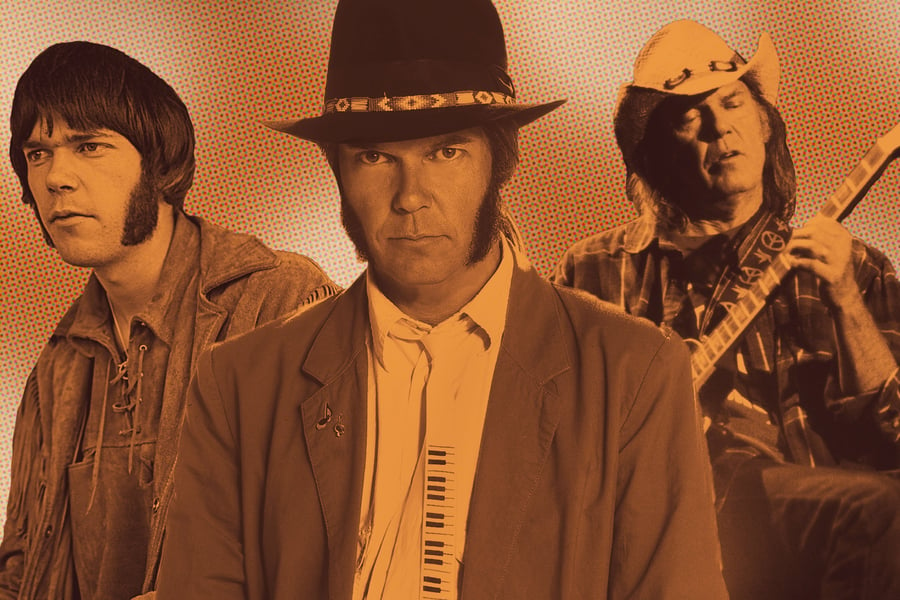The 100 Greatest Neil Young Songs
From tender ballads to raging grunge, the songwriter’s nearly 60-year career has produced some of rock’s most enduring music

Michael Ochs Archives/Getty Images; Aaron Rapoport/Corbis/Getty Images; Ebet Roberts/Redferns/Getty Images
“I’d rather keep changing and lose a lot of people along the way,” Neil Young told Rolling Stone in 1975. “If that’s the price, I’ll pay it. I don’t give a shit if my audience is a hundred or a hundred million.” Over the years, Young has turned that unapologetic sentiment into one of rock’s most durable credos, following his ornery muse wherever it leads him. He’s been a folk-rock superstar and a synth-rock pioneer, a country singer and a rockabilly revivalist, a left-leaning environmental activist and a Reagan supporter, a guy who’s been filling arenas since the Seventies even as he drives his fans nuts with his maverick musical detours. But whether he’s the tender soul singing “Heart of Gold” or the rangy crusader giving us a concept album about his awesome new electric car in 2009, Neil Young is always Neil Young – same creaky voice, same searching lyrics, placing him among the greatest songwriters in rock history.
Young first hit the scene with Buffalo Springfield in 1966, not long before Rolling Stone first hit newsstands. He’s been a regular in our pages ever since. We’ve covered his music for decades — hundreds and hundreds of songs spread over studio LPs, live albums, bootlegs, and tapes that Young has only recently begun to release on his Archives website. Some of them are beloved folk-rock hits; some sound like the work of a cult artist with little interest in hooks or high fidelity; some are just really fucking loud. We’ve narrowed that down to his 100 greatest songs, and tell the inside stories behind each one. Our list draws from every point in his career, proving, among other things, that Young is part of an elite group of Sixties rockers who’ve kept making great music long after their supposed glory days.
All these years later, Neil Young has neither burned out nor faded away. Instead, he’s built one of rock’s great careers by doing whatever he wanted, whenever he wanted.
From Rolling Stone US




















































































